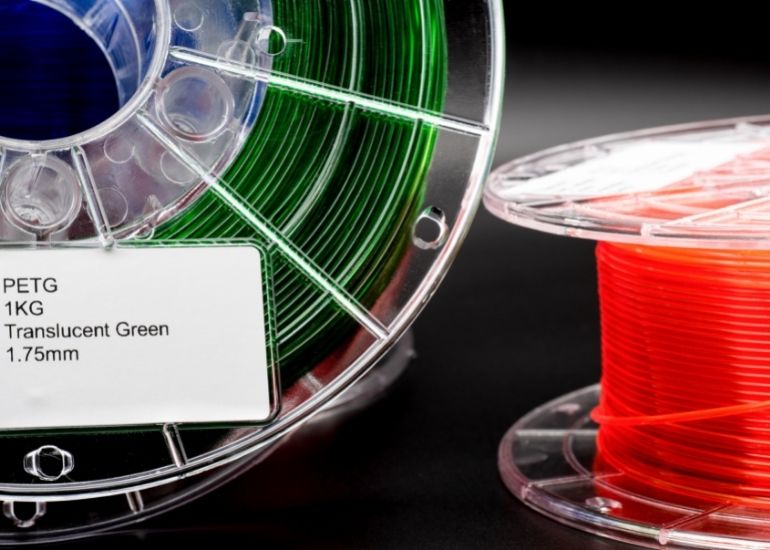In comparison to the ever-popular PLA filament, PETG is a very popular 3D printing filament because of its great strength, relative flexibility, and temperature resistance. You can measure it in many of the same ways as ABS filament, but PETG is much easier to deal with and has the extra advantage of being food safe. As a result, it has surpassed ABS as the market’s second most popular 3D printing filament. Here is everything you need to know about PETG filament.
What Is PETG?
PETG is created from Polyethylene Terephthalate (PET), the same material used in plastic water bottles, but with some ethylene glycol replaced with CHDM (cyclohexanedimethanol). Hence, the letter “G” after PET stands for “glycol-modified.” As a result, the filament is clearer, less brittle, and easier to extrude than PET. However, it has the unintended consequence of altering the recycling process. PET is easily recyclable, but PETG is not; the slight variations between the two materials generate a pollutant in recycling facilities. Nonetheless, it’s a great filament for printing objects that need to be robust, smooth, and shrink-resistant. PETG is especially popular since it is considered food-safe; nevertheless, you should read the fine print on every spool you purchase to be sure.
The Drawbacks of PETG Filament
There aren’t many drawbacks to using PETG for printing. PETG is more susceptible to scratches and scuffs than PET. Despite being equivalent to PLA in terms of printing ease, many makers believe PETG to be a little more difficult to print than other materials. You’ll need to discover the “sweet spot” for your print settings because it has its own idiosyncrasies. When you compare it to PLA, you’ll probably notice more clumping at the nozzle and more stringing. PETG is wonderful for releasing after cooling if you’re using a glass print bed. But bear in mind the easy release throughout your print and make sure your bed temperature is high enough to keep it attached.
When Should You Use PETG Filament?
PETG is a good all-around material, but its flexibility, strength, temperature, and impact resistance set it apart from other filaments. This makes it excellent for mechanical parts, 3D printer parts, and protective components that might undergo sustained or abrupt stress. Furthermore, because the material is food-safe, it can be an excellent choice for products that will come into contact with food or drink. Just double-check your specific material to be sure.
We hope this article has given you everything you need to know about PETG filament! When it comes to PETG, there can be many things that go wrong with the filament due to its sensitivity. As such, make sure you know how to tell when your PETG has gone bad and how to prevent it from happening in the first place.

